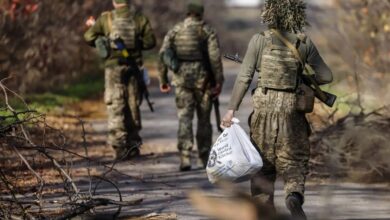What Global Consequences Can The War In Ukraine Continue in 2023?
The continuation of the war between Russia and Ukraine in 2023 will affect the world in economic, military, and humanitarian areas.

Photo: Picsaweb-ВО
LatinAmerican Post | Luis Angel Hernández Liborio
Listen to this article
Leer en español: ¿Qué consecuencias globales puede traer que la guerra en Ucrania siga durante 2023?
What happens in Ukraine quickly has had a global impact, since February 24, when the Russian invasion formally began, until today, the economic, social, political, and military effects, among others, are becoming more noticeable. Everything can be summed up in uncertainty, while the war continues to spread, its impact on the world continues. The scenarios for 2023 are not rosy as long as the war continues, and even worse when there is no real progress towards peace, these are the possible consequences.
The Economy, The Turning Point
The first actions of the European Union and the United States after the start of the Russian invasion were a series of sanctions that were added to those already in place for the annexation of Crimea in 2014. They bet on the economic wear and tear on Russia to stop the war, although The impact also affected the economy of the whole world, which turned this event into a kind of drag race. High inflation, a product of the crisis generated by the pandemic, has continued to rise with the advance of the war. The first major impact occurred in the rise in prices, especially for essential products from Russia and Ukraine, among which fertilizers, grains, and fuels stand out, according to the World Trade Organization. These three elements affect agricultural productivity and directly food security in developed countries, but especially in poor countries. Last September, the OECD estimated the negative impact on the global Gross Domestic Product at 2.8 trillion dollars for 2023, with a growth of 0.3% according to World Bank estimates, also when variables such as inflation, which will continue to rise, are considered. especially between European countries close to the conflict.
The Increase In Military Spending
Since 2014 with the annexation of Crimea by Russia, military spending has been increasing among the main military powers in the world. The war in Ukraine will only increase the numbers in 2023: France will increase its budget by 7.4% compared to 2022 to reach a figure of 42.8 billion dollars, this amount is 36% higher than that of 2017, a significant increase. The United States will increase it by 8% compared to 2022 to place it at 858 billion dollars, Russia raised it to 82.6 billion dollars, although there is a separate item calculated at 120 billion dollars that is considered "secret" because it is not he knows exactly what they will be spent on, but it is expected that they will be used for war. China will bring the increase to around $230 billion, assuming the world is preparing for a larger-scale conflict. Not surprisingly, NATO members pledged to raise their military spending to 2% of their GDP in the following years, something that countries like Brazil have expressed their desire to join. Others like Taiwan, and its complicated relationship with China, have increased it by 14% to reach 2.7% of their GDP. The Russian-Ukrainian conflict has been the catalyst that has accelerated the growth of military spending, and while the war drags on, military spending will too.
You can also read: Winter in Europe: a chance for peace in Ukraine or a chance to escalate the war?
The Humanitarian Field, The Most Relevant
In humanitarian terms, the impact of the war has focused mainly on the Ukrainian exodus (and to a lesser extent Russian) towards Western Europe, more than a million and a half people have mobilized since last February. While the war continues to escalate, in 2023 this number will increase, we could see an increase in Russian citizens fleeing the obligation to participate in the war, political persecution, and minorities at risk. However, in the same area, the impact on poor countries should not be lost sight of, particularly when it comes to food security. The scarcity and increase in prices of fertilizers and grains put these countries at risk of famine, the UN warns of a food crisis, and if the pandemic and climate change already affected regions such as Africa, the Middle East, and Latin America , the war It has dealt a harder blow. Countries like Somalia, Ethiopia, Sudan, Kenya, Afghanistan, Yemen, Nigeria, Haiti, Guatemala, and Honduras, are called "hotspots of hunger" by the organization. In the "Horn of Africa" alone, hunger is expected to affect 26 million people, according to the UN report on the food crisis.
Is there a Possibility Of Peace In 2023?
In international politics, the conflict will bring greater isolation of Russia, or rather, of Vladimir Putin, which could lead him to seek alternatives to end the conflict. In other words, to negotiate a peaceful solution, the Europeans have proposed increasing sanctions and reducing their energy dependence on Russia. If they manage to put enough pressure on Putin, they would have the necessary scenario to change the direction of the war. The Business Economic Consensus of PriceWaterhouseCoopers (PwC), one of the four big global consultancies, affirms that the war may end in 2023, the most likely scenario for experts is that Ukraine loses the disputed territories, in exchange for ending the conflict, according to 40% of the consensus experts. This would allow it to stay close to the EU and NATO, which would certainly be a pause in the current war, not the end. But another 28% consider that the war will drag on indefinitely and that Ukraine will continue with the support of the West, finally, the least likely scenario, according to experts, is that Ukraine wins the war and maintains its territorial integrity.




